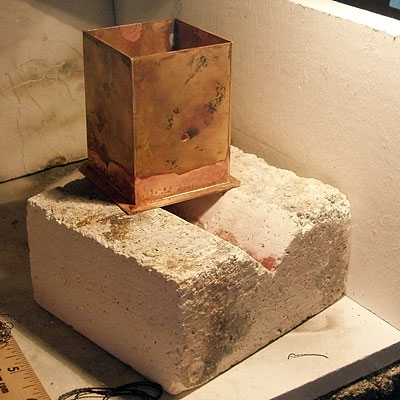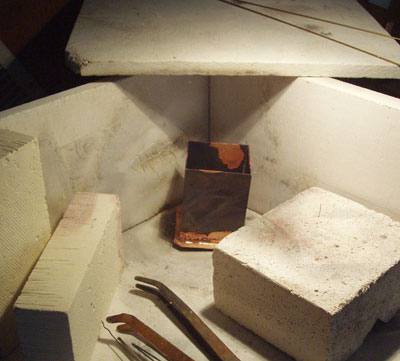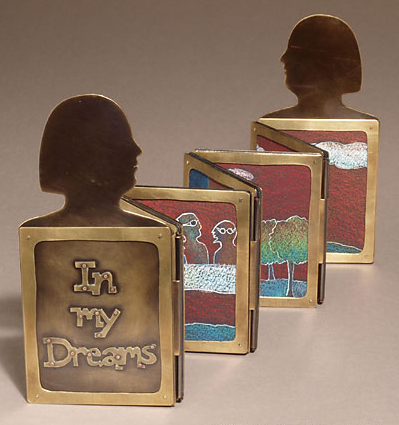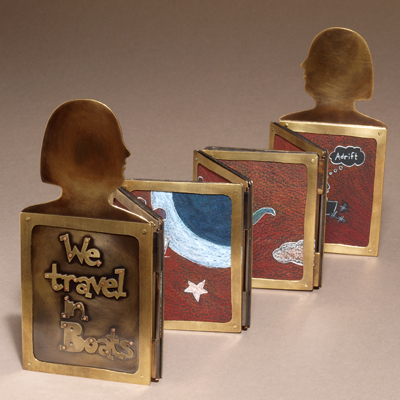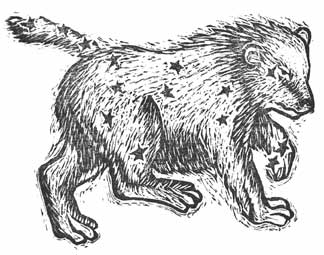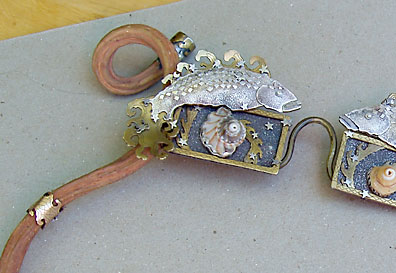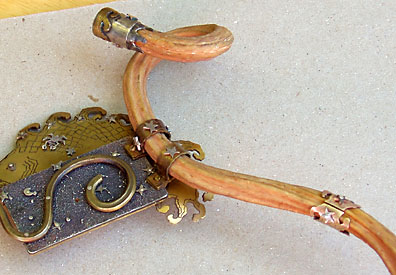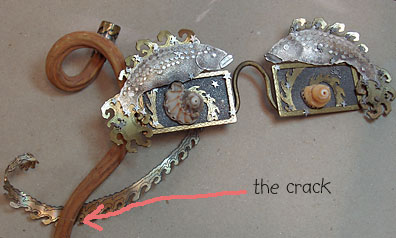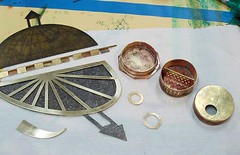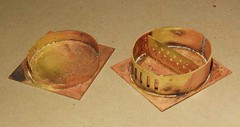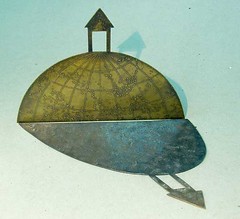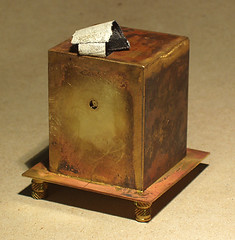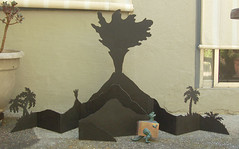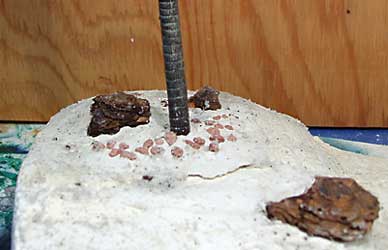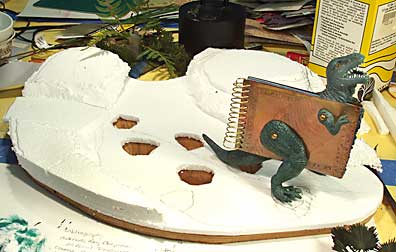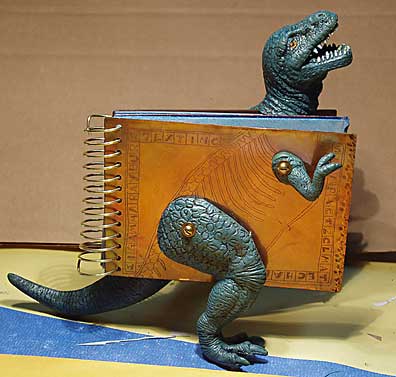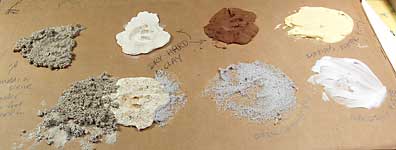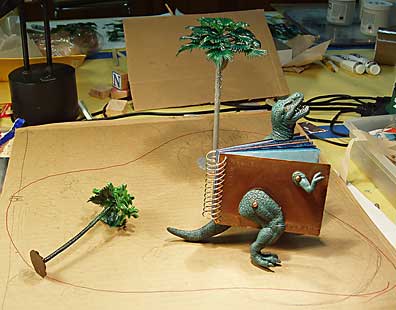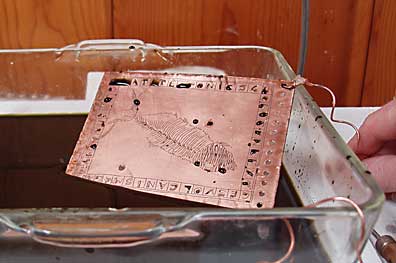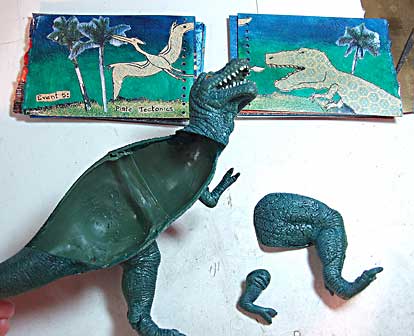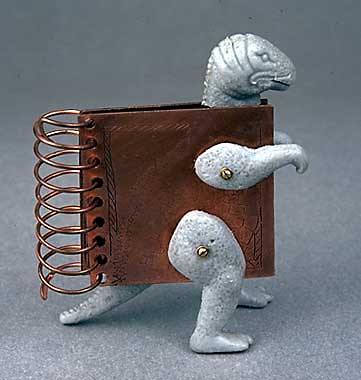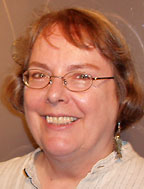No, I haven't forgotten about this blog! I'm teaching a class in my studio on Sundays right now, and my schedule is weird. I keep thinking Thursday is Saturday, etc. You know. This coming Sunday will be the last meeting, and I'm a little sad about it. It's a very nice group of people.

I had some time in the studio this week. Yesterday afternoon I made a rock. It's a funny looking lump here, actually a two-part rock.

Here is is open. It's about 2.5 inches wide, and will be the cover for a rock book. I hammered it out of 18 gauge copper. It may meed some refining, and I'm not sure how to do the pages. But it was lovely to have some time to just focus on a project.
I am also trying to find a metal shear. I would like one that cuts up to 14 gauge brass, doesn't take too much workshop space, and doesn't cost a bundle. I haven't exactly defined "bundle" for my self. I just sold a book and am delighted to have unexpected money for tools. There is one in the
Rio Grande catalog, which takes a lot of table space, but looks appealing. There is one in the
Otto Frei catalog, which they may not have anymore, costs a lot, and takes very little table space. And I have a call in to a local place, that has metalworking tools. I hope they call me back today. After waiting for years to buy this shear, I'm feeling impatient to go ahead.
Today I want to make several fern book covers. I also need to get my slide application together for the
Book Arts Jam. That is the next thing on my event horizon, and I am looking forward to it already. I hope to have a major portion of these books finished so they can be in the exhibition
BABA organizes as part of the Jam.
Labels: Work in Progress
